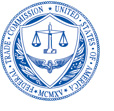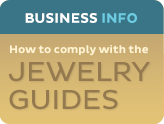Platinum Jewelry
Platinum jewelry should be labeled so you can tell how much platinum there is in the piece. Any jewelry that is not labeled platinum, plat., or pt. contains less than 50% pure platinum and shouldn’t be marketed as platinum.
About Platinum Jewelry
Platinum jewelry is rarely 100% pure platinum. Usually, the platinum is mixed with similar metals or non-precious base metals. Generally, the higher the percentage of pure platinum, the higher the value of the jewelry.
Metals used in platinum jewelry usually fall into one of three categories:
- pure platinum
- other platinum group metals (palladium, ruthenium, rhodium, iridium, osmium)
- base metals (copper or cobalt, for example)
If you want to buy platinum jewelry, find out what percentage is pure platinum, and if the item is:
- hypoallergenic
- durable
- lustrous
- dense
- scratch and tarnish resistant
- able to be resized or repaired
- going to retain the precious metal over time
Examples of Platinum Jewelry Labels
| If You See This on The Label | The Piece Is |
|---|---|
| Platinum | At least 95% pure platinum |
| 850 Plat. | 85% pure platinum and 15% platinum group or base metals |
| 800 Pt. 200 Pd. | 80% pure platinum and 20% palladium; the product contains 100% platinum group metals |
| 75% Platinum 25% Copper | 75% pure platinum and 25% copper; the total of pure platinum and other platinum group metals is less than 95% |
| No platinum label | Less than 50% pure platinum |
How Much Platinum Is in this Piece of Jewelry?
Marketers describe or mark platinum in terms of the percentage of pure platinum in the piece. To be called platinum, an item should be at least 50% pure platinum (or 500 "parts per thousand").
If an item is marked as platinum without any qualification, it should have at least 95% pure platinum (950 parts per thousand).
Most platinum jewelry sold in the U.S. is 85% platinum and 15% other metals, either precious platinum group metals and/or base metals. Labels will look like this:
- 850Plat. = 85% pure platinum
- 900Pt. = 90% pure platinum
For items containing between 50% and 85% pure platinum combined with other platinum group metals, marketers should state the amount of pure platinum and the amount of other platinum group metals. For example:
- 800 Pt. 200 Pd. = 80% pure platinum, 20% palladium
- 750 Pt. 250 Rh. = 75% pure platinum, 25% rhodium
- 600 Pt. 350 Ir. = 60% pure platinum, 35% iridium
Platinum jewelry with 15% to 50% base metals also may be labeled "platinum.” These platinum/base metal alloys contain from 50 to 85% pure platinum, but the total of pure platinum and other platinum group metals is less than 95%. Labels for this jewelry should include the amounts of pure platinum and other metals in the piece using the full name of each metal and its percentage. (No abbreviations or "parts per thousand" should be used in advertising). For example:
- 75% Platinum 25% Copper = 75% pure platinum and 25% copper
- 60% Platinum, 35% Cobalt, 5% Rhodium = 60% pure platinum, 35% cobalt and 5% rhodium
Any item that's less than 50% pure platinum should not be marked or labeled as "platinum."

